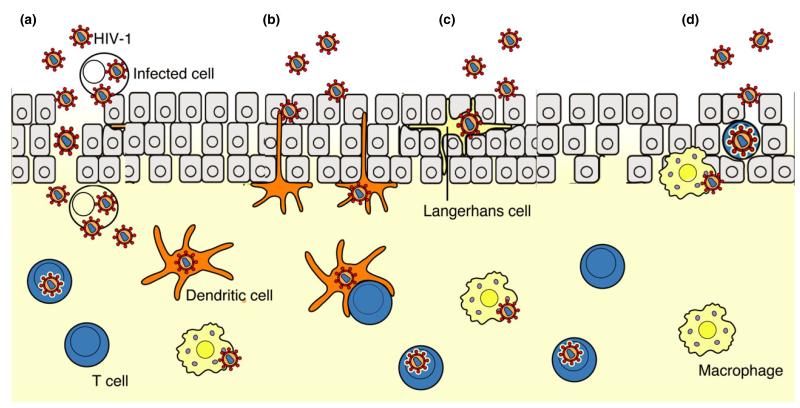Fig. 1.
Pathways of HIV-1 entry in the vaginal and ectocervical mucosae. HIV-1 enters the vaginal and ectocervical mucosae by four potential routes. (a) Disruption of vaginal and ectocervical mucosae induced by trauma or infection-associated mucosal inflammation, ulceration, and erosion provides cell-free and cell-associated HIV-1 direct access to target cells in the stratified squamous epithelium, the lamina propria, and local lymphatic and blood vessels (vessels not shown). (b) Dendritic cells at the epithelial/lamina propria interface capture virus, migrate into the lamina propria or further to the draining lymph nodes, and trans-infect target mononuclear cells. (c) Langerhans’ cells may take up virions that enter the porous stratified epithelium. (d) HIV-1 infects directly CD4+ T cells and macrophages within the squamous epithelium. [Modified from ref. 104.]

